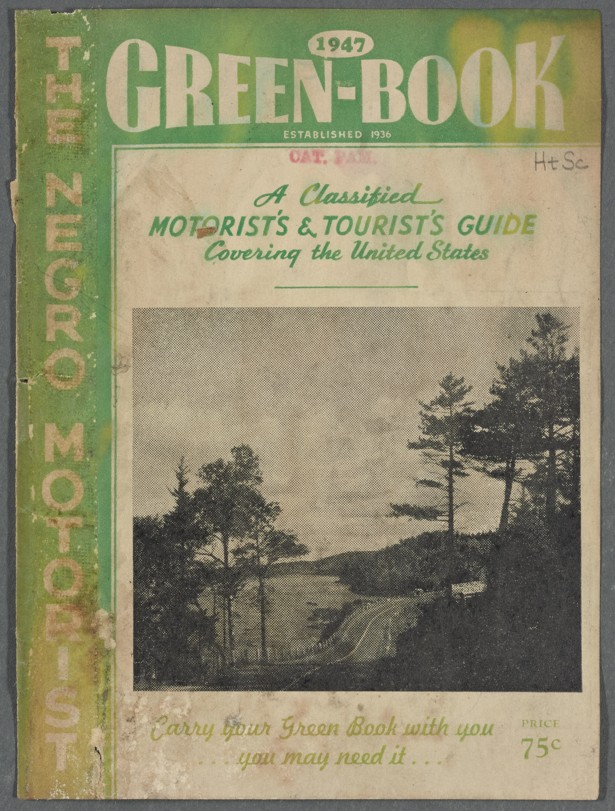Revisiting a Jim Crow-Era Guide for Traveling While Black
Which restaurants were safe? Which hotels?

“The White traveler has had no difficulty in getting accommodations, but with the Negro, it has been different.” So reads the foreword of a series of travel guides called Green Books, created to help black Americans travel safely through a segregated and often unsafe country during the years of Jim Crow.
The Green Books are among a giant new free digital archive of over 187,000 historical documents including maps, postcards, photographs, and documents released by The New York Public Library and reported on recently by my colleague Adrienne LaFrance.
Named after its creator Victor H. Green, a postal worker in New York, the Green Books were published between the 1930s and the 1960s, halting when the Civil Rights Act finally ended the legal practice of segregation. In a 2010 interview with NPR, the civil-rights activist and the then-chairman of the NAACP Julian Bond recalled his family’s use of the travel guides during road trips. “My family had a ‘Green Book’ when I was young,” he said, “and used it to travel in the South to find out where we could stop to eat, where we could spend the night in a hotel or somebody’s home.”
Also in a 2010 interview with The New York Times, Lonnie Bunch, the director of the National Museum of African American History and Culture added his own memories. “The ‘Green Book’ tried to provide a tool to deal with those situations,” he said. “It also allowed families to protect their children, to help them ward off those horrible points at which they might be thrown out or not permitted to sit somewhere. It was both a defensive and a proactive mechanism.”
The original Green Book, published in 1937, is fairly limited, with only 16 pages. But by the 1960s the publication was around 100 pages filled with hotels, restaurants, attractions, and homes that black travelers could safely visit. And those listings weren’t solely black-owned businesses Jennifer Reut, a historian who has studied the contents of the Green Books notes. Reut’s project Mapping the Green Book, takes an in-depth look at individual establishments around the country and their history. As time went on, the books and their entries became more sophisticated and varied, with international listings that stretched into Canada, Mexico, and the West Indies. The official title also became swankier:The Negro Motorist Green Book: An International Travel Guide.
The most prolific listings are exactly where you’d expect them, cities like New York, Detroit, Chicago, and Washington, D.C., where there were thriving populations of black Americans and more progressive mindsets. Reut says that the Green Books and similar travel guides were perhaps more valuable for their listings outside of these metropolises, where friendly facilities were few and far between. She says that the race of the owners of the facilities that advertised in the guides ran the gamut, but were all welcoming to black residents.
Reut’s work traveling to the Green Book sites is a reminder that the the horror of Before the Civil Rights Act the Green Book Helped Black Travelers Through Jim Crow - The Atlantic:
